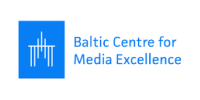How to spot when news is fake
‘Fake news’ and disinformation – information deliberately manipulated with the aim of fooling people – have become an increasingly visible global phenomenon. Social media and their personalisation tools have made it easier to spread bogus stories. They often use emotions to capture attention and generate clicks, for economic or ideological reasons. Even young, digital-savvy people find it difficult to identify manipulated news. Significantly, six in ten news items shared on social media were not even read first by the user who shared them. Some 85 % of Europeans see ‘fake news’ as a problem in their own country, and 83 % view it as a problem for democracy in general. This compass will help you navigate the ocean of information, and find your way through waves of lies and disinformation.

Source: EPRS | European Parliamentary Research Service
Author: Naja Bentzen; Graphic: Samy Chahri, Members’ Research Service





